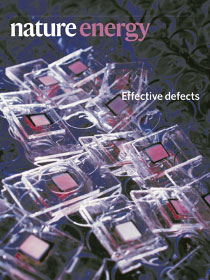Nanotechnology and Advanced Spectroscopy
The research of this team focuses on chemical, spectroscopic, and device aspects of semiconductor nanocrystals also known as 'colloidal quantum dots'
Contact Us
- Group Leader (Acting)
- Harshini Mukundan
- Deputy Group Leader (Acting)
- Kristy Nowak-Lovato
- Team Leader
- Victor Klimov
- Group Office
- (505) 667-7121
This is a world-renowned program, which combines efforts in advanced chemical synthesis, the state-of-art optical spectroscopy, and nanoscale devices
Quantum dot research at LANL has a long, more than two-decade history. It started with a handful of colorful fragments of semiconductor-doped glasses, brought to Los Alamos in 1995 by team’s founder, Victor Klimov. Over time this research has evolved into a comprehensive program spanning virtually all areas of quantum dot science from synthesis and advanced optical spectroscopy to theory and devices.
Quantum dots are tiny specs of semiconductor matter that are just a few nanometers across. The focus of Nanotech team’s research is on particles fabricated via colloidal chemistry known as colloidal or nanocrystal quantum dots. Because of their size-controlled electronic properties quantum dots can be viewed as ‘artificial atoms’ that can be engineered on demand to address a specific physical problem or a need of a certain application.
The studies of the Nanotech team have revealed many unusual and useful properties of quantum dots of great practical utility in numerous technologies including solar energy conversion, LEDs and displays, optical amplifiers and lasers, and flexible electronics. In particular, this team is responsible for the discoveries of nanocrystal lasing (Science 290, 314, 2000) and carrier multiplication (Phys. Rev. Lett. 92, 186601), and more recently, for groundbreaking work on luminescent sunlight collectors (Nature Phot. 12, 105, 2018), nanoscale single-dot light sources (Nature Mater. 18, 249, 2019), advanced solar cells (Nature Energy 5, 409, 2020), and new lasing concepts (Science 365, 672, 2019).

Effective defects: Defects are normally detrimental to the power conversion efficiency of solar cells. Du et al. show that in quantum-dot-sensitized solar cells charge-trapping defects assist photoconversion and increase efficiency by supporting charge transfer to the electrodes.
LA-UR-20-28881
2020
- Ligand impurities' surprising role in doping quantum dots
- Albuquerque Journal: Low-cost quantum dot windows could power a solar future
- LANL Press Release: Efficient, 'green' quantum-dot solar cells exploit defects
- Nature Energy News & Views: Turn defects into strengths
2019
- LANL Press Release: Modified quantum dots capture more energy from light and lose less to heat
- SciGlow: More energy instead of heat by planting magnetic spins into a quantum dot
- LANL Press Release: More stable light comes from intentionally 'squashed' quantum dots

Functional impurities: Doping of CdSe quantum dots with manganese enacts novel functionalities exploited in color conversion, sunlight harvesting, electron photoemission, and advanced imaging. By introducing functional secondary phosphines impurities into quantum dot synthesis, Los Alamos researchers achieve a virtually ideal regime of doping which proceeds solely via incorporation of Mn without unwanted side reactions.





